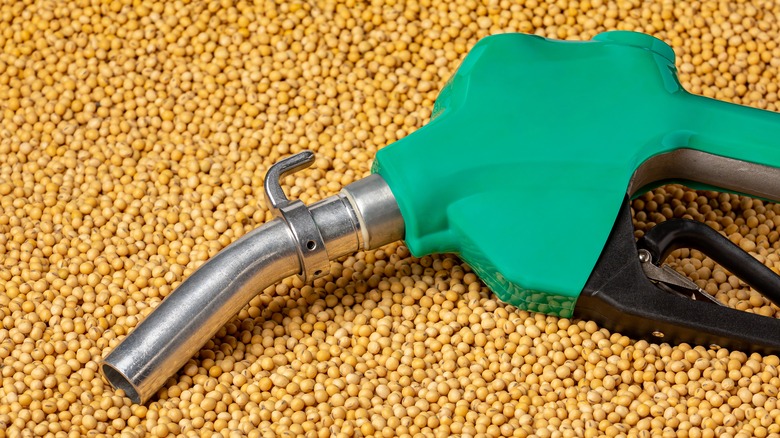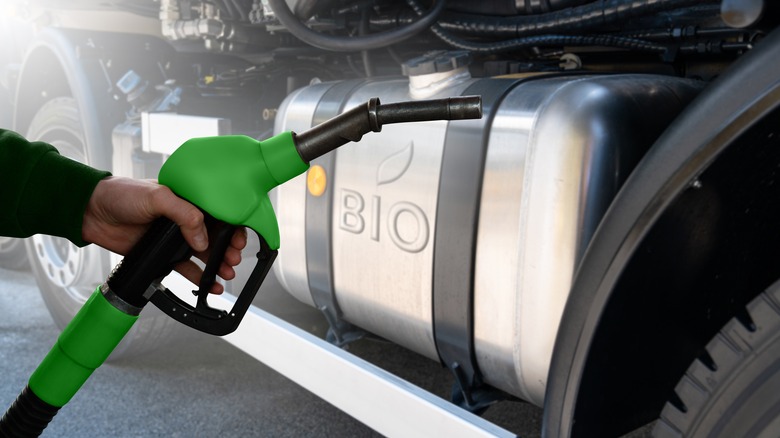Biodiesel Vs. Diesel: What's The Difference?
While the most common vehicles in the United States that use diesel engines are the large 18-wheelers that transport goods all across the country, that's not the case across the pond. In most of Europe, cars with diesel engines are a dime a dozen, comprising more than a third of those on the road. Unlike traditional gas-powered engines, diesel engines don't contain spark plugs. Instead, to obtain the explosion required by internal combustion engines to burn fuel and get the vehicle moving, diesel engines rely on compression. This adds some reliability to the engine as well as a better lifespan than regular gas-powered engines.
Diesel is already more efficient than gas, but there's always room for improvement. One of the ways scientists improved the way diesel fuel is used was by introducing a biodegradable alternative. Biodiesel fuel isn't a new idea. In 2005, manufacturers produced 25 million gallons of biodiesel fuel; in 2013, that number skyrocketed to 1.7 billion gallons.
Diesel fuel is refined from crude oil, just like traditional petroleum. And just like regular petroleum, diesel produces pollutants that burn off into the atmosphere. Biodiesel, on the other hand, is produced a little differently, and it may, in fact, surprise you. It's a relatively easy process that's gaining enough popularity that Boeing has set a goal to have all of its commercial aircraft exclusively use biofuel by 2030. So, what's so different about biodiesel fuel compared to diesel?
What is biodiesel fuel?
Biodiesel fuel is an alternative fuel source that's renewable and biodegradable. It's made from a mixture of diesel fuel and modified vegetable oils — yes, the same ingredients you use to cook your dinner (er, vegetable oil, not diesel fuel). Soybean oil is the primary oil used, but the "bio" part of the mixture can also come from algae, canola oil, and animal tallow.
Biodiesel fuel reduces the amount of emissions polluting the atmosphere, and it's already a tried-and-tested fuel source. The majority of diesel fuel sold at gas stations in the U.S. already blends biodiesel fuel into their diesel pumps. A diesel fuel pump labeled B5 consists of 5% biodiesel and 95% diesel fuel. There are larger blends, such as B20, but those are reserved for commercial vehicles. Additionally, the price to create biodiesel fuel comes in close to the same as petroleum diesel.
The challenge with producing 100% biodiesel fuel is the vegetable nature of it. It's prone to spoiling, just like the products you store at home. If biodiesel fuel is kept at a warm temperature for too long, it could potentially grow mold, which would not be good for any vehicle. On the flip side, if stored in freezing temperatures, it will harden and pose issues when consumers try to fill up. Until technology improves, automakers do not recommend a blend higher than B5 for passenger vehicles. Luckily, some researchers from MIT have developed a method to make biofuels from nonfood feedstocks.

